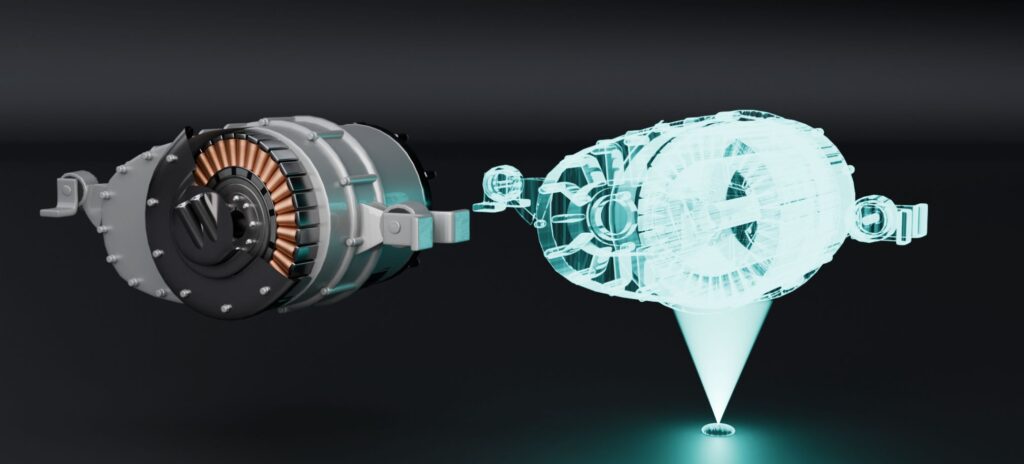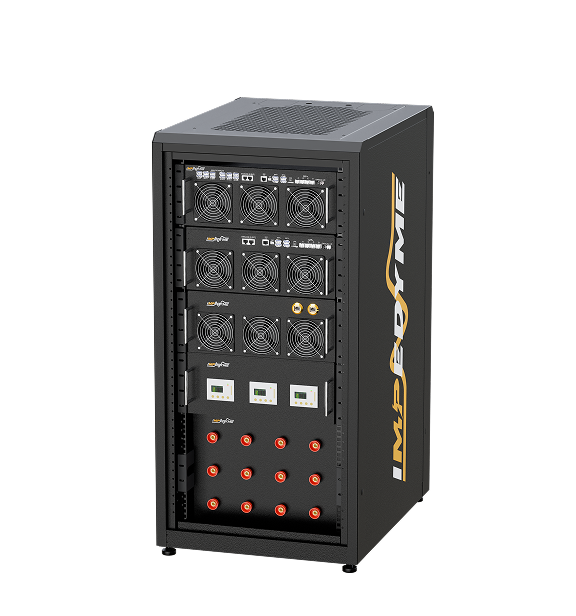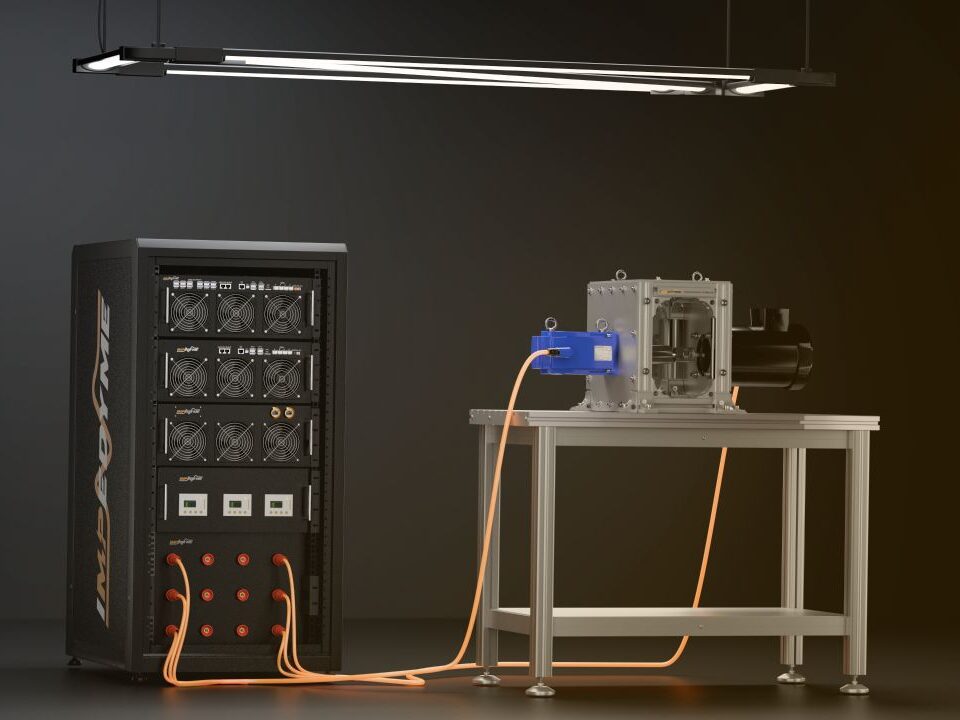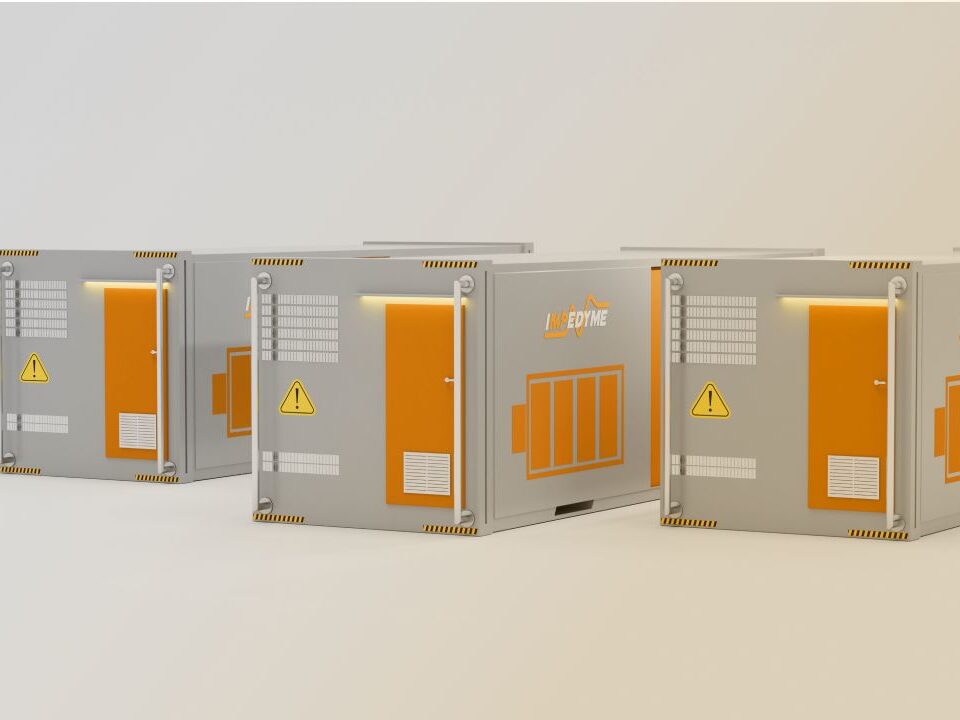
-
 Induction Motor
Induction Motor
-
 Automotive Electrical System Simulation
Automotive Electrical System Simulation
-
 DC/DC Bidirectional Converter
DC/DC Bidirectional Converter
-
 PWM Control for Brushless DC
PWM Control for Brushless DC
-
 BLDC Motor Control and Drive Simulation
BLDC Motor Control and Drive Simulation
-
 Electric Vehicle Fast Charger Simulation
Electric Vehicle Fast Charger Simulation
-
 DFIG Wind Turbine Simulation
DFIG Wind Turbine Simulation
-
 Dual Active Bridge
Dual Active Bridge
-
 EV Dynamometer Test Environment Simulation
EV Dynamometer Test Environment Simulation
-
 Electric Vehicle Simulation
Electric Vehicle Simulation
-
 Three-Phase Grid-Connected Inverter Using Direct-Q…
Three-Phase Grid-Connected Inverter Using Direct-Q…
-
 Three-Phase Grid-Connected Solar Photovoltaic
Three-Phase Grid-Connected Solar Photovoltaic
-
 Grid-Connected Rectifier
Grid-Connected Rectifier
-
 Grid-Tied Inverter System
Grid-Tied Inverter System
-
 Torque Control in a Hybrid Excitation Synchronous …
Torque Control in a Hybrid Excitation Synchronous …
-
 Wye-Delta Starting Circuit
Wye-Delta Starting Circuit
-
 IPMSM-Based Axle-Drive
IPMSM-Based Axle-Drive
-
 Simplified Parallel Hybrid Electric Vehicle
Simplified Parallel Hybrid Electric Vehicle
-
 Simplified Series Hybrid Electric Vehicle
Simplified Series Hybrid Electric Vehicle
-
 Series-Parallel Hybrid Electric Vehicle
Series-Parallel Hybrid Electric Vehicle
-
 Three-Phase Matrix Converter Simulation
Three-Phase Matrix Converter Simulation
-
 Venturini Modulation for Three-Phase Matrix Conver…
Venturini Modulation for Three-Phase Matrix Conver…
-
 Microgrid Frequency Regulation Using Vehicle-to-Gr…
Microgrid Frequency Regulation Using Vehicle-to-Gr…
-
 Three-Phase Modular Multilevel Converter
Three-Phase Modular Multilevel Converter
-
 Field-Oriented Control
Field-Oriented Control
-
 Interior Permanent Magnet Synchronous Generator
Interior Permanent Magnet Synchronous Generator
-
 Permanent Magnet Synchronous Machine
Permanent Magnet Synchronous Machine
-
 PMSM Rotor Angular Velocity
PMSM Rotor Angular Velocity
-
 PMSM-Based Electrical Traction Drive
PMSM-Based Electrical Traction Drive
-
 Maximum Power Point Tracking
Maximum Power Point Tracking
-
 Six-Phase Permanent Magnet Synchronous Machine
Six-Phase Permanent Magnet Synchronous Machine
-
 Synchronous Machine-Based Electrical Drive Simulat…
Synchronous Machine-Based Electrical Drive Simulat…
-
 Single-Stage Solar Inverter
Single-Stage Solar Inverter
-
 Three-Phase Cycloconverter Simulation
Three-Phase Cycloconverter Simulation
-
 Totem-Pole PFC Simulation
Totem-Pole PFC Simulation
-
 Twelve-Pulse Thyristor Rectifier
Twelve-Pulse Thyristor Rectifier
-
 Two-Wheeler On-Board Charger
Two-Wheeler On-Board Charger
-
 Vienna Rectifier Simulation
Vienna Rectifier Simulation
-
 High-Voltage Direct Current
High-Voltage Direct Current
-
 Wireless Power Transfer
Wireless Power Transfer

Comprehensive Documentation for Wye-Delta Starting Circuit for an Induction Machine
Table of Contents
- 1 Comprehensive Documentation for Wye-Delta Starting Circuit for an Induction Machine
- 1.1 Introduction
- 1.2 System Overview
- 1.2.1 What is Wye-Delta Starting?
- 1.2.2 Purpose of the Simulation
- 1.3 Key Features
- 1.3.1 Reduced Inrush Current and Smooth Acceleration
- 1.3.2 Automatic or Timer-Based Transition to Delta Mode
- 1.3.3 Impact of Load Variations on Starting Performance
- 1.3.4 Performance Optimization
- 1.3.5 Cost Savings
- 1.3.6 Faster Time-to-Market
- 1.3.7 Compliance with Standards
- 1.4 Simulation Objectives
- 1.5 Technical Description
- 1.5.1 System Configuration
- 1.5.2 Control Methodology
- 1.6 Advantages of Wye-Delta Starting
- 1.7 Applications
- 1.7.1 Industrial Motor Drives
- 1.7.2 HVAC Systems
- 1.7.3 Water and Wastewater Treatment
- 1.7.4 Mining and Heavy Industries
- 1.7.5 Oil and Gas Industry
- 1.7.6 Manufacturing and Production
- 1.7.7 Marine and Offshore Applications
- 1.8 Simulation Benefits
- 1.9 Summary
- 1.10 Future Enhancements
- 1.10.1 Induction Motor
- 1.10.2 Automotive Electrical System Simulation
- 1.10.3 DC/DC Bidirectional Converter
- 1.10.4 PWM Control for Brushless DC
Introduction
This project models a wye-delta starting circuit for an induction machine, a widely used method to reduce inrush current during startup. By initially connecting the machine in a wye configuration, the starting current is limited, and after acceleration, the circuit transitions to a delta connection for full-load operation. This simulation provides insights into the starting dynamics, transition timing, and performance impact of wye-delta starting on induction machines.

System Overview
What is Wye-Delta Starting?
Wye-delta starting is a two-stage reduced voltage starting method used for large three-phase induction motors. It involves:
- Wye Connection (Startup Phase): The motor receives one-third of the full-line voltage, reducing starting current and torque.
- Delta Connection (Normal Operation): The motor is switched to the full line voltage for rated operation.
Purpose of the Simulation
The simulation aims to:
- Analyze inrush current reduction during startup.
- Evaluate torque response in both wye and delta modes.
- Optimize transition timing to minimize mechanical and electrical stress.
Key Features
Reduced Inrush Current and Smooth Acceleration
By starting in the wye configuration, the motor experiences:
✔ Lower starting current (≈33% of direct-on-line starting).
✔ Reduced mechanical stress and torque pulsations.
➡️ HIL/PHIL Benefit: Enables real-time tuning of wye-delta transition timing for different load conditions.
Automatic or Timer-Based Transition to Delta Mode
The simulation supports:
✔ Manual, automatic, and time-delay-based transitions.
✔ Analysis of switching surges and transient effects.
➡️ HIL/PHIL Benefit: Provides real-time assessment of transition strategies to ensure smooth switching.
Impact of Load Variations on Starting Performance
Different load scenarios are considered, including:
✔ No-load, light-load, and heavy-load starting conditions.
✔ Effect of transition timing on speed and torque fluctuations.
➡️ HIL/PHIL Benefit: Helps optimize switching logic for various industrial applications.
Performance Optimization
Simulations help optimize the design and control of Wye-Delta starting circuits for specific applications, ensuring efficient and reliable operation.
Cost Savings
By identifying potential issues early in the design phase, simulations reduce the cost of prototyping and testing.
Faster Time-to-Market
Simulations accelerate the development process, enabling faster product launches.
Compliance with Standards
Simulations ensure that Wye-Delta starting circuits meet industry standards and regulations for safety and performance.
Simulation Objectives
This simulation helps evaluate:
✔ Effectiveness of wye-delta starting in reducing inrush current.
✔ Transient behavior and stability during switching.
✔ Optimization of transition timing for smooth operation.
➡️ HIL/PHIL Benefit: Allows hardware-level validation before implementing in industrial systems.
Technical Description
System Configuration
- Input: Three-phase AC supply.
- Motor: Squirrel cage induction machine.
- Starter Circuit: Contactor-based wye-delta switching mechanism.
Control Methodology
- Starting Phase: Wye configuration limits voltage and current.
- Transition Mechanism: Timer-based or sensor-based switching to delta mode.
- Full-Load Operation: Delta connection ensures full power delivery.
➡️ HIL/PHIL Benefit: Allows real-time testing of different control algorithms and switching delays.
Advantages of Wye-Delta Starting
✔ Lower Electrical Stress: Reduces voltage dip in the power system.
✔ Extended Motor Lifespan: Minimizes mechanical stress on bearings and windings.
✔ Energy-Efficient Startup: Avoids high inrush current peaks.
➡️ HIL/PHIL Benefit: Provides a controlled test environment to optimize startup efficiency.
Applications
Industrial Motor Drives
Pumps and Compressors: Wye-Delta starting is commonly used in large pumps and compressors to reduce the starting current and mechanical stress on the motor and connected equipment.
Fans and Blowers: Induction motors driving large fans and blowers use Wye-Delta starting to minimize inrush current and ensure smooth startup.
Conveyor Systems: Conveyor belts and material handling systems often use Wye-Delta starting to reduce the initial torque and current, preventing mechanical shocks.
HVAC Systems
Air Handling Units: Large HVAC systems use Wye-Delta starting for induction motors in air handling units to reduce starting current and avoid voltage dips in the power supply.
Chillers and Cooling Towers: Induction motors in chillers and cooling towers benefit from Wye-Delta starting to ensure smooth and efficient operation during startup.
Water and Wastewater Treatment
Water Pumps: Large water pumps used in water treatment plants and distribution systems often employ Wye-Delta starting to reduce starting current and mechanical stress.
Aeration Blowers: Induction motors driving aeration blowers in wastewater treatment plants use Wye-Delta starting to minimize inrush current and ensure reliable operation.
Mining and Heavy Industries
Crushers and Grinders: Induction motors in crushers and grinders use Wye-Delta starting to reduce the high starting torque and current, preventing damage to the motor and mechanical components.
Hoists and Conveyors: Mining equipment, such as hoists and conveyors, often use Wye-Delta starting to ensure smooth and controlled startup.
Oil and Gas Industry
Pumping Stations: Induction motors in oil and gas pumping stations use Wye-Delta starting to reduce starting current and avoid voltage fluctuations in the power grid.
Compressors: Large compressors in gas processing plants use Wye-Delta starting to minimize inrush current and mechanical stress during startup.
Manufacturing and Production
Machine Tools: Induction motors in machine tools, such as lathes and milling machines, use Wye-Delta starting to reduce starting current and ensure smooth operation.
Injection Molding Machines: Large induction motors in injection molding machines use Wye-Delta starting to minimize inrush current and mechanical stress.
Marine and Offshore Applications
Shipboard Systems: Induction motors in shipboard systems, such as pumps and compressors, use Wye-Delta starting to reduce starting current and ensure reliable operation.
Offshore Platforms: Induction motors in offshore oil and gas platforms use Wye-Delta starting to minimize inrush current and avoid voltage dips in the power supply.
➡️ HIL/PHIL Benefit: Enables pre-deployment testing for these applications under real-world conditions.
Simulation Benefits
With this simulation, users can:
✔ Analyze startup performance and current reduction.
✔ Evaluate transition timing for optimal torque response.
✔ Compare different starting methods (DOL vs. wye-delta).
➡️ HIL/PHIL Benefit: Ensures seamless integration of wye-delta starting strategies into industrial applications.
Summary
The Wye-Delta Starting Circuit Simulation provides a detailed framework for analyzing reduced-voltage motor starting methods. Impedyme’s HIL and PHIL solutions enhance the development process:
| Development Stage | Impedyme’s Contribution |
|---|---|
| Starting Performance Analysis | Real-time HIL validation of inrush current reduction |
| Transition Optimization | PHIL-based testing of switching delays and torque impact |
| Industrial Deployment | Hardware-level validation before field implementation |
Future Enhancements
✔ Integration of adaptive switching algorithms for dynamic load conditions.
✔ Implementation of soft-start techniques combined with wye-delta starting.
✔ Predictive maintenance strategies using machine learning for starter systems.
The Wye-Delta Starting Circuit Simulation serves as a vital tool for developing efficient motor startup strategies. With Impedyme’s HIL/PHIL solutions, engineers can optimize switching logic, minimize electrical stress, and ensure smooth induction motor operation before real-world deployment.






